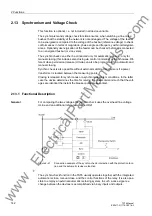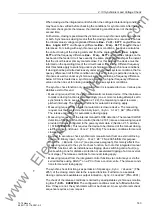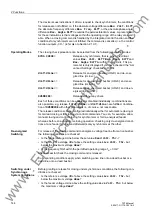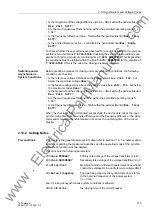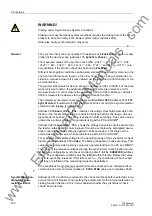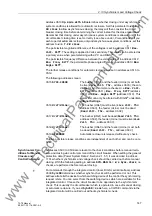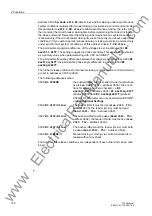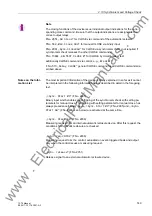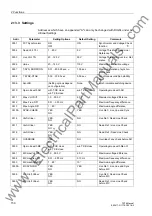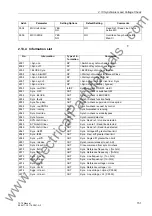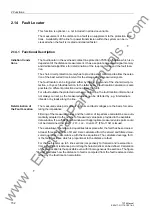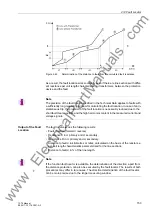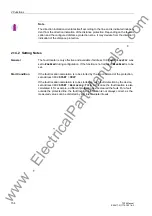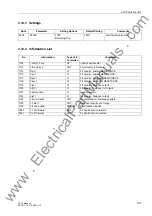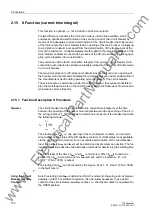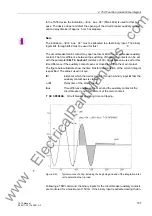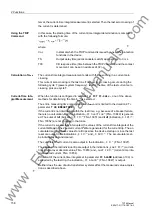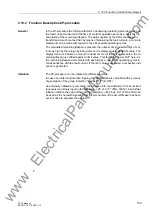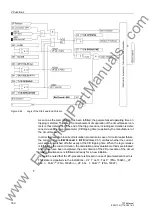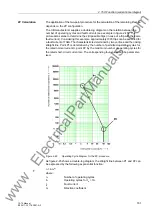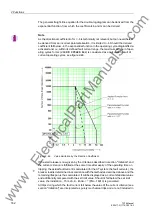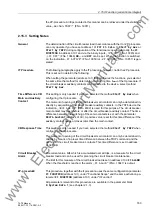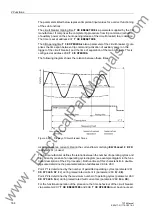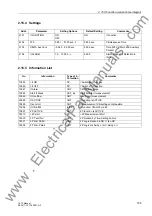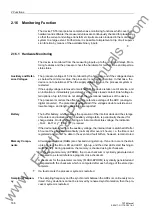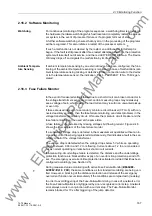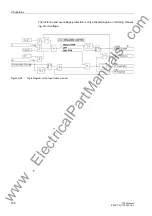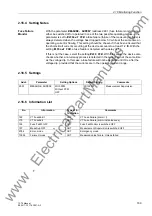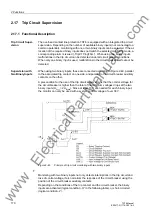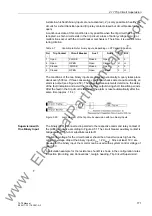
2 Functions
156
7ST6 Manual
E50417-G1176-C251-A3
2.15
It Function (current-time integral)
This function is optional, i.e. not included in all device variants.
Via two different procedures the It function makes information available, which
enables an optimised determination of the service period of the circuit breaker by
means of an adequately precise determination of the circuit breaker load. By means
of the It procedure the circuit breaker load on opening of the main breaker contacts up
to arc deletion is determined, apart from the determination of the fault current at the
time of trip command. A reliable statement with regard to the remaining lifespan of the
main breaker contacts can be made by means of the 2P-procedure when taking oper-
ating cycle diagrams into consideration.
The summation of the fault current-time integrals from opening of the breaker main
contact up to arc deletion is a simple and reliable indicator of the extent of contact wear
in a circuit breaker.
The two-point procedure (2P-procedure) determines the fault current on opening of
the breaker main contact and calculates the remaining lifespan under consideration of
the manufacturer-specific data (operating cycle diagrams) of the circuit breaker.
These procedures, summarised under the term It function, thus make it possible to
plan the maintenance work on the circuit breaker within the framework of service and
maintenance more efficiently.
2.15.1 Function Description It Procedure
General
The circuit breaker load is proportional to the current-time integral over the time
between the opening of the breaker main contact
t
start
and the quenching of the arc in
the arcing chamber
t
end
. This allows to determine a measure of the breaker load with
the following formula:
The starting time
t
start
, i.e. the opening of the main breaker contacts, can be deter-
mined either by the status of the CB auxiliary contacts or, if that status is not available,
via the device TRIP command. For an accurate determination of the circuit breaker
load, the instants
t
start
and
t
end
must be determined as precisely as possible. The fol-
lowing two sections describe two alternative methods for determining the starting time
t
start
.
The plausibility of the times
t
Start
and
t
End
is monitored. When
t
Start
is found to be
greater than
t
End
, there will be no It measurement, and the indication
„It set
error“
(FNo. 13855) is output.
The starting time
t
Start
can be marked by the signal
„Start It Meas“
(FNo. 13848)
in the fault record.
Using the Circuit
Breaker Auxiliary
Contacts
Here the starting time
t
Start
is determined from the moment of opening a circuit breaker
auxiliary contact. For sufficient precision, it is absolutely necessary to use an NC
contact of the circuit breaker auxiliary contact, i.e. the closed contact is equivalent to
the OPEN position.
www
. ElectricalPartManuals
. com

